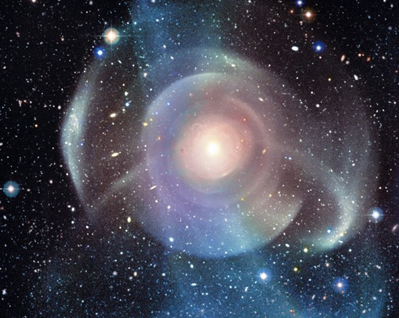The stellar halos of galaxies are diffuse and faint components which provide scientists with a window into the assembling history of galaxies. A research team at MPA has investigated the properties of stellar halos in large disk galaxies by using both observations and state-of-the-art simulations of galaxy formation. They find a great diversity in the halo properties for galaxies that are – otherwise – alike in terms of morphology, mass, and luminosity. Observed properties, such as a mean metallicity as a function of galactocentric distance, can be reproduced by the simulations if they are analyzed in the same way as the data.
Stellar halos are diffuse and faint components surrounding most large galaxies. They form largely from the accretion and disruption of smaller satellite galaxies, although their inner regions also contain stars which were formed in the disk of their host galaxy. Stellar halos are highly important to understand galaxy formation and evolution since they preserve a record of the accretion history of galaxies and serve as probes of the total matter distribution of galaxies. However, stellar halos are far less luminous than the main galactic disk. Observing them is therefore an extremely challenging task. Over the past decades, different approaches have been developed to reveal this diffuse component of galaxies. Observations of galaxies with very long exposure times have produced stunning images, an example of which is shown in Figure 1. These observations helped characterize the role of accretion and mergers in shaping the outskirts of galaxies as well as unveil their vast extent, reaching distances larger than 100 kpc from their centre.

Figure 1: The observed stellar halo of NGC 474 showing the complex substructure present in the outer regions of this large elliptical galaxy. Shells and tidal stellar streams are formed as a consequence of the interactions with and accretion of smaller galaxies.
For more information about this study, visit: http://www.mpa-garching.mpg.de/303920/hl201601
